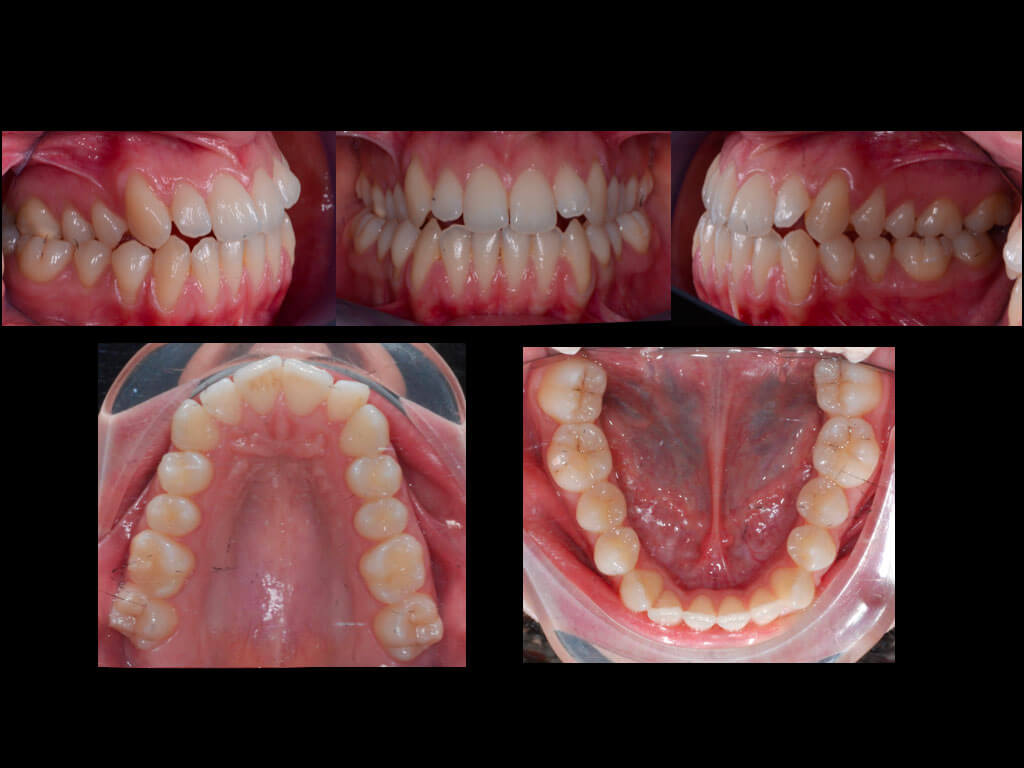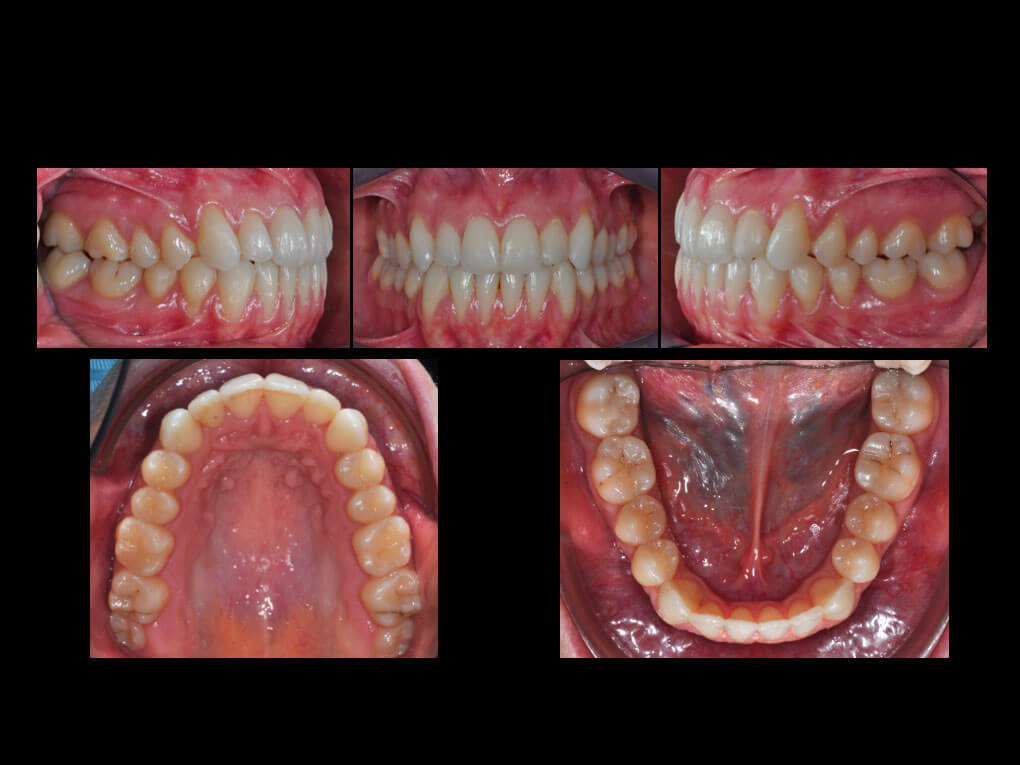The 23-year-old patient presented with a Class III malocclusion, a skeletal contraction of the upper jaw and a resulting bilateral posterior crossbite. Several recessions in the lateral and lower incisors were visible, which could be traced back to a thin biotype and particularly delicate gingiva.
Orthopaedic correction of the posterior crossbite was planned as a first step, with a pure expansion of the upper jaw so that the periodontium would not be damaged further. To stabilise the result, the expander remained in situ for six months. In the meantime, intraoral scans were taken to programme the aligner treatment. Based on the digital programming, 20 F22 aligners per arch were printed and delivered to the patient after applying the necessary grip points and performing the required IPR.
Each aligner was used for seven days and, after this first series, a further 5 upper and lower aligners were programmed for finishing. Therefore, the overall treatment was completed in ten months, of which only six months were conducted with F22 aligners. Clinically, the patient showed a first molar and canine class and correct posterior transverse diameters. The recessions were not exacerbated during the treatment and can now be treated with a surgical root covering approach.

